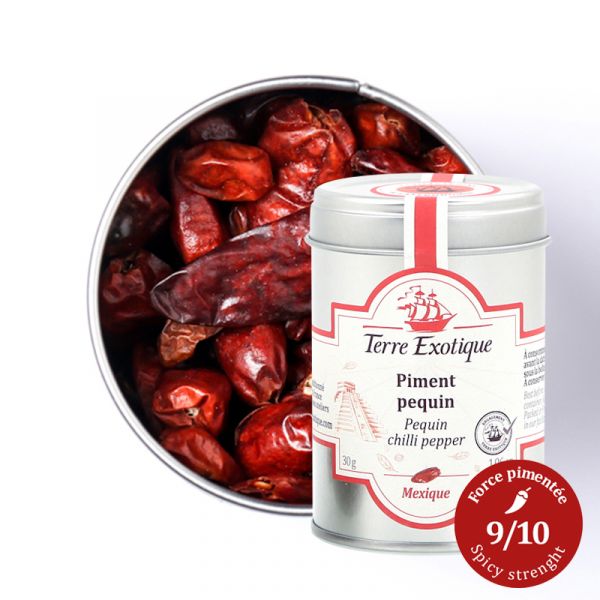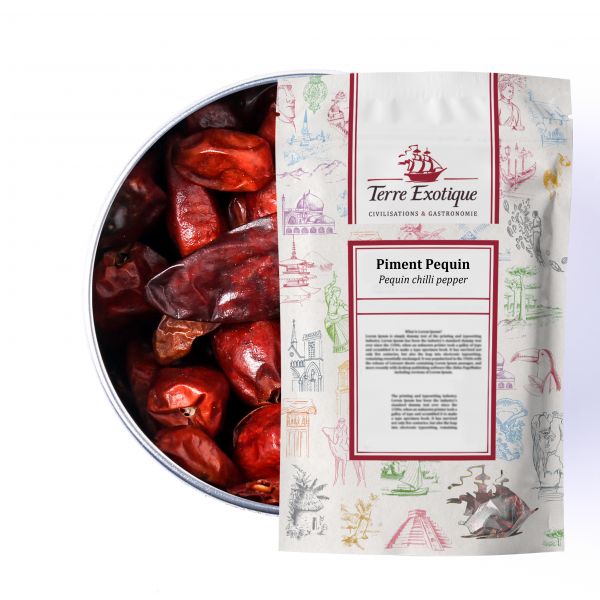



How to Use the Pequin Chilli Pepper in Cooking?
Some recommendations regarding the Pequin chilli pepper
The Pequin chilli pepper is classified among very spicy chillies. Therefore, it is necessary to take certain precautions when handling it. If possible, use gloves to avoid any contact with mucous membranes, especially the eyes. If you don't have gloves available, avoid touching your mouth, lips, or eyes. After handling the chilli pepper with bare hands, wash your hands thoroughly.
Some suggestions to enhance your dishes with the Pequin chilli pepper
The Pequin chilli pepper is used to enhance many dishes. It is prevalent in traditional Mexican cuisine, found in tacos, enchiladas, and chili con carne. It is also used to make spicy sauces, soups, and vinegars. In Mexico, this chilli pepper is sometimes paired with chipotle chilli to flavor certain alcohols, such as tequila. Furthermore, it pairs wonderfully with both white and red meats, as well as vegetables. It's the ideal chilli pepper for infusing your dishes and preparing spicy oils. The Pequin chilli pepper also goes perfectly with chocolate desserts, adding a touch of originality for your taste buds.
The Aromas of the Pequin Chilli Pepper
The Pequin chilli pepper resembles the bird's eye chilli in its explosive spiciness. However, the Pequin chilli pepper has more intense spicy and fruity notes than the bird's eye chilli. It has a lemony and nutty flavor. It is highly aromatic and falls into the category of powerful chillies, with a spiciness rating of 8/10 on the Scoville scale.
The Pequin Chilli Pepper, a Mexican Chilli Pepper
Botanical Origin of the Pequin Chilli Pepper
The Pequin chilli pepper, whose botanical name is Capsicum annuum, belongs to the Solanaceae family, just like tomatoes, potatoes, and eggplants. It is also known as "chiltepines" in Guatemala and El Salvador, or "piment Congo" in Nicaragua and northern Costa Rica.
How Does the Pequin Chilli Pepper Grow?
The Pequin chilli pepper grows as a shrub in regions with a hot and sunny climate. The production of this chilli pepper is often limited by the fragility of the plant, especially its low tolerance to frost. That's why the Pequin chilli pepper is one of the most expensive chillies in the markets of Mexico. The peppers evolve from green to black. When they turn red, it is a sign that they have reached maturity. The fruits are numerous on each of the bushes and measure about 15mm.
Geographical Origin of the Pequin Chilli Pepper
The chilli pepper, or Capsicum annuum, is native to Bolivia. Thanks to birds that are insensitive to its spiciness, the chilli pepper quickly proliferated throughout South America and Mexico. Its cultivation gave rise to various varieties, including the Pequin chilli pepper. The main Pequin chilli pepper plantations are found in Mexico.
The History of the Pequin Chilli Pepper
The Pequin chilli pepper was already consumed 7000 years BC by pre-Columbian civilizations to add flavor to their dishes. The chilli pepper made its way to European kitchens after the discovery of the Americas by Christopher Columbus. Captivated by the organoleptic qualities of the chilli pepper, which resembled pepper, the explorer brought it back to Europe, where it was previously very expensive. The word "pequin" seems to come from the Spanish word "pequeño," which means small, as it is a small-sized chilli pepper, measuring about 1cm.
Click here to learn more about chillies
| Allergen | Absence |
|---|---|
| Native country | Amérique du Sud |
| Genus and botanical species | Capsicum annuum |
| Ingredients | pequin chilli pepper |
| TRACES EVENTUELLES D'ALLERGÈNES | céleri, sésame, moutarde, fruits à coques. |
 Français
Français 